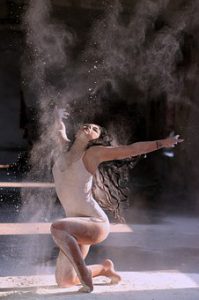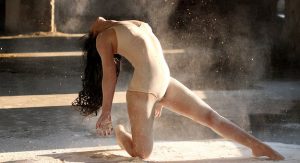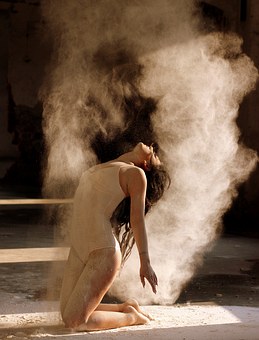 It is amazing what ballet floor barre exercises can achieve.
It is amazing what ballet floor barre exercises can achieve.
I always hear examiners stating in courses we attend “when in doubt take it to the floor.”
While ballet dancing has evolved quite a lot over recent years, it is mostly danced upright and as far away from the floor as possible.
Modern dance, however, has always had a lot of floor work, and I must add that this floor work can be very beneficial for ballet dancers as well.
If you are teaching and you notice that something looks awful, or notice that the student isn’t quite understanding where in space his or her body is, then it can be very beneficial to take that exercise onto the floor.
Ballet floor bar exercises can help dancers to feel exactly what muscles they should be using, and where exactly their bones should be placed in space, without the added pressure of having to hold the position in an upright stance.
I for one have had lots of ah-ha moments on the floor, like wow I can feel my back working, or ok so that’s how I take my leg to second without distorting my hip line.
Teachers shouldn’t underestimate the value of ballet floor bar exercises. The wonderful thing about working on the floor is that the dancer is taught how to gain control over his or her limbs and body.
Ballet floor bar exercises are also great for dancers with injuries or who need strengthening in certain areas.
Even taking something as simple as a port de bras lying on your back can teach you how to use your muscles in different ways. Simply by taking the fight against gravity away from the equation, one can feel which muscles are working in your back and how the shoulders have to pull down the dancers back as the arms go up.
So teachers, even though you are often pushed for time, try to incorporate more ballet floor bar exercises into your class, and you could ultimately save yourself time in the long run, as your student’s technique will improve, allowing you more time to work on the choreography.
The Advantages Of Ballet Floor Bar Exercises
Here are just a few to start off with:
- To develop a much stronger sense of muscle awareness.
- To understand how to engage the muscles in the correct way.
- To make connections on initiating of certain movements using certain muscle groups.
- The strength developed helps with their stretching
- Fewer injuries and fewer aches and pains.
- Balance is improved.
- Core muscles become more engaged.
- Acceleration of dancers strength and technique.

There are many methods (as you can see below) when it comes to using ballet floor barre exercises in class, and if you are wanting to accelerate your dancer’s technique in a safe and proven manner, floor work is an excellent choice.
While it would be wonderful to have a lot of time and be able to devote entire classes on a regular basis to ballet floor barre exercises, in most cases it simply isn’t doable.
But all is not lost, if you have students who are struggling in particular areas, giving them an extra set of exercises to do in their own time is highly beneficial.
So next time you see your dancers muscles not working as they should, take it to the floor and watch that clean technique start to unveil.
What Ballet Floor Barre Exercises Are Good To Use On My Students
If you have never tried any ballet floor barre exercises, you could start off by taking something that your students do at the bar and transfer it to the floor.
A great example is to take developes for instance and do them devant and a la seconde lying on your back, concentrating on posture and hip lines. You could then take them derriere lying on your stomach.
Grande ronds de jambe en l’air also works wonders done like this as your dancers will really be able to understand how their hips should be placed while executing the exercise.
Sitting on the floor and working with a straight back with the legs in front of you is a great way to get that core working and feeling where your turnout should be coming from.
Great Products to Help You
Simply click on the images if you want to find out more about the products.
For more on ballet technique, click here.







